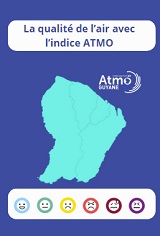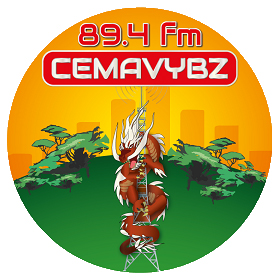Blada.com
mardi 01 juillet
Boîtes aux lettres
Courrier des lecteurs
Petites annonces
Emploi / Formation
Covoiturage
Infos citoyennes
Infos citoyennes
07/12/21
« Ce que le Suriname peut apporter à la Guyane… et inversement »
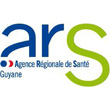
La semaine dernière, une délégation de soignants guyanais et de l’Agence régionale de santé s’est rendue à Paramaribo. Ils ont visité plusieurs services de l’hôpital AZP et ont rencontré le directeur surinamais de la santé ainsi que des personnes en charge du système de santé à la frontière avec la Guyane. Plusieurs pistes de collaboration, notamment à travers des transferts de patients, sont sur la table.
Et si, un jour, les patients guyanais recevaient leurs séances de radiothérapie dans un hôpital de Paramaribo plutôt qu’endurer un long (et en ce moment glacial) voyage jusqu’au centre Léon-Bérard à Lyon (Rhône) ? Et si un patient surinamais, hospitalisé en Guyane, était transféré à l’hôpital d’Albina, dès que son état le permet ? Voici quelques-unes des pistes tracées la semaine dernière, lors d’un déplacement de soignants guyanais et de responsables de l’Agence Régionale de Santé (ARS) au Suriname.
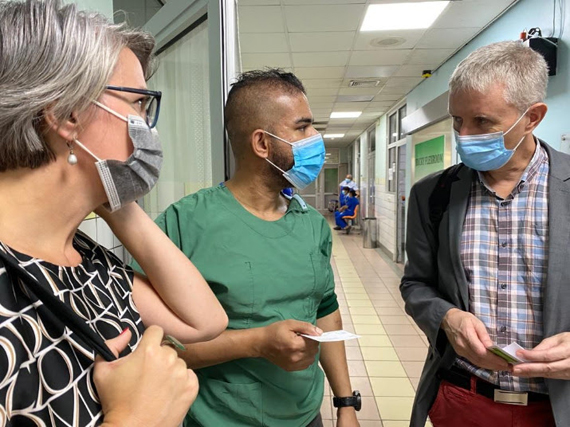 Clara de Bort, directrice générale de l’ARS, Benoît Van Gastel, délégué territorial ouest et chargé de mission coopération à l’ARS, le Pr Mathieu Nacher (CIC-Inserm), les Drs Yvane Golitin (urgentiste, CHK), Abdoulaye Kama (urgentiste, CHC), Fredrik Terlutter (équipe de vaccination et coopération, Chog) et Marc Lédy (biologiste, laboratoire Biosoleil) ont visité plusieurs services de l’hôpital AZP de Paramaribo et rencontré plusieurs acteurs de la santé, dont Rakesh Gajadar Sukul, le directeur de la santé du Suriname. Clara de Bort y a découvert « des équipes mobiles très innovantes, une recherche dynamique et une collaboration très poussée avec les Pays-Bas ». Elle s’est dite « très impressionnée par le niveau des équipes et des équipements de nos voisins. »
Clara de Bort, directrice générale de l’ARS, Benoît Van Gastel, délégué territorial ouest et chargé de mission coopération à l’ARS, le Pr Mathieu Nacher (CIC-Inserm), les Drs Yvane Golitin (urgentiste, CHK), Abdoulaye Kama (urgentiste, CHC), Fredrik Terlutter (équipe de vaccination et coopération, Chog) et Marc Lédy (biologiste, laboratoire Biosoleil) ont visité plusieurs services de l’hôpital AZP de Paramaribo et rencontré plusieurs acteurs de la santé, dont Rakesh Gajadar Sukul, le directeur de la santé du Suriname. Clara de Bort y a découvert « des équipes mobiles très innovantes, une recherche dynamique et une collaboration très poussée avec les Pays-Bas ». Elle s’est dite « très impressionnée par le niveau des équipes et des équipements de nos voisins. »
Des échanges poussés ont eu lieu avec le Service régional de santé (RGD), établissement chargé des soins de santé primaires dans la plaine côtière, soit plus de 50 structures au Surinam. Les professionnels ont présenté des organisations de soin très innovantes, notamment en ophtalmologie.
A l’hôpital académique de Paramaribo (AZP) plusieurs visites ont eu lieu. Aux urgences, les locaux ne sont pas extraordinaires. « Mais on voit qu’il y a du personnel », constate le Dr Abdoulaye Kama. Qu’ils soient surinamais ou néerlandais, de nombreux soignants s’affairent autour des malades. Avant cela, la visite avait commencé dans le service de radiothérapie. L’hôpital AZP y reçoit quarante patients par jour, et pourrait en accueillir davantage si besoin. Des patients du Guyana et d’Antigua y viennent régulièrement. Les patients de Curaçao, dont la machine est en panne, aussi. L’équipement est similaire à ce que l’on retrouve partout dans le monde. « L’organisation de leur service de radiothérapie évite des pertes de chances pour le patient », note le Dr Marc Ledy.
Le service de coronarographie est un autre bon point de cette visite. « Ils font les coronarographies et ils traitent. En Guyane, on a la coronarographie, mais pas le traitement hormis la pose de stent à Cayenne », souligne le Dr Yvane Golitin. Les échanges ont été également intenses avec le chirurgien cardiaque, spécialité absente en Guyane, formé aux Pays-Bas avant de revenir travailler au Suriname ; ou avec le Dr Jerrel Pawiroredjo, dont les résultats avec ses collègues du Eye Center a été salués dans un article de Reuters. Récemment, avec son équipe, il a réalisé des repérages puis de la chirurgie de la cataracte avec des blocs de terrain pour environ 2 000 habitants de la rive surinamienne du Maroni.
Cette visite avait pour objectif « de renforcer la confiance dans nos systèmes de santé, de mieux connaître leur offre de soins, rappelle Clara de Bort. Des patients surinamais des hôpitaux de Cayenne et Saint-Laurent du Maroni sont parfois transférés aux Antilles. Dans certaines spécialités, ils pourraient être aussi bien pris en charge au Suriname. Dans la perspective de la création du CHU de Guyane, nous avons besoins de connaître les besoins de nos voisins, de connaître leurs formations, de proposer des échanges d’étudiants, de renforcer la recherche en santé. Or nos populations et nos environnements ont beaucoup en commun. » Sur ce point, le Pr Mathieu Nacher a cité le travail en commun réalisé depuis quinze ans, que ce soit pour le diagnostic et la prise en charge de l’histoplasmose, la lutte contre le paludisme ou le suivi des hépatites et du VIH sur les deux rives du Maroni.
A plus ou moins long terme, plusieurs coopérations sont envisageables : le transfert de patients surinamais des hôpitaux de Guyane qui, une fois stabilisés, poursuivraient leur hospitalisation chez eux. Le cas des bedblockers a, par exemple, été évoqué avec Lindy Liauw-Kie-Fa, directrice de l’hôpital AZP. L’accueil de patients guyanais pourrait aussi être étudié, lorsque la spécialité n’existe pas en Guyane et si cela évite une longue évacuation sanitaire vers un autre territoire. Côté guyanais, certaines activités inexistantes dans les deux pays pourraient voir le jour si les patients surinamais pouvaient être accueillis : les exemples de la procréation médicalement assistée (PMA) et de l’installation d’un caisson hyperbare dans les hôpitaux de Guyane ont été cités. Des médecins surinamais, dont beaucoup ont des diplômes néerlandais, donc reconnus par l’Union européenne, pourraient intervenir dans nos hôpitaux lorsque les spécialistes manquent chez nous. Des échanges pour les formations, des échanges de données entre les chercheurs, d’échantillons pour les biologistes sont aussi sur la table. Rakesh Gajadar Sukul, le directeur de la santé du Suriname, se réjouit que les discussions aient été « fructueuses. C’est un premier pas pour le transfert de patients ». « Il faut que les praticiens des deux pays prennent l’habitude de se partager des patients et que tout le monde sache que c’est quelque chose de normal », conclut le Dr Fredrik Terlutter.
Cet article est issu de la Lettre pro de l’Agence régionale de santé. Vous pouvez vous y abonner en remplissant le formulaire suivant : https://forms.sbc28.com/5a8bed50b85b5350ef1cd117/t13M7zUZQi2XMq5E3DdnhQ/0WQoeDwjRXqJblCpKbLDzA/form.html
 Last week, a delegation of Guianese health workers and the Regional Health Agency visited Paramaribo. They visited several departments of the AZP hospital and met the Surinamese director of health as well as people in charge of the health system on the border with French Guiana. Several avenues of collaboration, in particular through patient transfers, are on the table.
Last week, a delegation of Guianese health workers and the Regional Health Agency visited Paramaribo. They visited several departments of the AZP hospital and met the Surinamese director of health as well as people in charge of the health system on the border with French Guiana. Several avenues of collaboration, in particular through patient transfers, are on the table.
What if, one day, Guianese patients received their radiotherapy sessions in a hospital in Paramaribo rather than enduring a long (and at this freezing moment) journey to the Léon-Bérard center in Lyon (Rhône)? What if a Surinamese patient, hospitalized in French Guiana, was transferred to Albina hospital as soon as his condition permitted? Here are some of the avenues laid out last week, during a trip by French Guiana caregivers and officials from the Regional Health Agency (ARS) to Suriname.
 Clara de Bort, Director General of the ARS, Benoît Van Gastel, Western territorial delegate and in charge of cooperation mission at the ARS, Prof. Mathieu Nacher (CIC-Inserm), Drs Yvane Golitin (emergency physician, CHK), Abdoulaye Kama (emergency physician, CHC), Fredrik Terlutter (vaccination and cooperation team, Chog) and Marc Lédy (biologist, Biosoleil laboratory) visited several departments of the AZP hospital in Paramaribo and met several health actors, including Rakesh Gajadar Sukul, the director of health of Suriname. Clara de Bort discovered there "very innovative mobile teams, dynamic research and very extensive collaboration with the Netherlands". She said she was "very impressed with the level of the teams and the equipment of our neighbors. "
Clara de Bort, Director General of the ARS, Benoît Van Gastel, Western territorial delegate and in charge of cooperation mission at the ARS, Prof. Mathieu Nacher (CIC-Inserm), Drs Yvane Golitin (emergency physician, CHK), Abdoulaye Kama (emergency physician, CHC), Fredrik Terlutter (vaccination and cooperation team, Chog) and Marc Lédy (biologist, Biosoleil laboratory) visited several departments of the AZP hospital in Paramaribo and met several health actors, including Rakesh Gajadar Sukul, the director of health of Suriname. Clara de Bort discovered there "very innovative mobile teams, dynamic research and very extensive collaboration with the Netherlands". She said she was "very impressed with the level of the teams and the equipment of our neighbors. "
Extensive discussions took place with the Regional Health Service (RGD), an establishment responsible for primary health care in the coastal plain, ie more than 50 structures in Surinam. The professionals presented very innovative care organizations, particularly in ophthalmology.
At Paramaribo Academic Hospital (AZP) several visits have taken place. In emergencies, the premises are not extraordinary. "But we can see that there are staff," says Dr Abdoulaye Kama. Whether they are Surinamese or Dutch, many caregivers are busy around the sick. Before that, the visit had started in the radiotherapy department. The AZP Hospital receives 40 patients there a day, and could accommodate more if needed. Patients from French Guiana and Antigua come there regularly. Patients from Curaçao, whose machine has broken down, too. The equipment is similar to what can be found around the world. "The organization of their radiotherapy department avoids loss of opportunity for the patient," notes Dr. Marc Ledy.
Another good point of this visit is the coronary angiography service. “They do the coronary angiograms and they treat. In French Guiana, we have coronary angiography, but not the treatment except for the placement of a stent in Cayenne ”, underlines Dr Yvane Golitin. Discussions were also intense with the cardiac surgeon, a specialty absent in French Guiana, trained in the Netherlands before returning to work in Suriname; or with Dr. Jerrel Pawiroredjo, whose results with his colleagues at the Eye Center were hailed in a Reuters article. Recently, with his team, he carried out scouting and then cataract surgery with blocks of land for around 2,000 inhabitants of the Surinamese side of the Maroni.
The purpose of this visit was "to strengthen confidence in our health systems, to better understand their healthcare offer," recalls Clara de Bort. Surinamese patients from Cayenne and Saint-Laurent du Maroni hospitals are sometimes transferred to the West Indies. In some specialties, they might as well be taken care of in Suriname. In view of the creation of the French Guiana University Hospital, we need to know the needs of our neighbors, to know their training, to offer student exchanges, to strengthen health research. But our populations and our environments have a lot in common. On this point, Professor Mathieu Nacher cited the joint work carried out over the past fifteen years, whether for the diagnosis and management of histoplasmosis, the fight against malaria or the monitoring of hepatitis and HIV on the two banks of the Maroni.
In the more or less long term, several co-operations are possible: the transfer of Surinamese patients from hospitals in French Guiana who, once stabilized, would continue their hospitalization at home. The case of bedblockers, for example, was discussed with Lindy Liauw-Kie-Fa, director of AZP hospital. The reception of Guianese patients could also be studied, when the specialty does not exist in French Guiana and if this avoids a long medical evacuation to another territory. On the Guianese side, certain non-existent activities in the two countries could emerge if Surinamese patients could be accommodated: the examples of medically assisted procreation (MAP) and the installation of a hyperbaric chamber in hospitals in French Guiana were cited. Surinamese doctors, many of whom have Dutch diplomas, which are therefore recognized by the European Union, could intervene in our hospitals when specialists are lacking in our area. Exchanges for training, exchanges of data between researchers, samples for biologists are also on the table. Rakesh Gajadar Sukul, Suriname's director of health, is delighted that the discussions were “fruitful. This is a first step for the transfer of patients ". "Practitioners in both countries need to get into the habit of sharing patients and everyone needs to know that this is normal," concludes Dr Fredrik Terlutter.
This article is from the Professional Letter of the Regional Health Agency. You can subscribe to it by filling out the following form: https://forms.sbc28.com/5a8bed50b85b5350ef1cd117/t13M7zUZQi2XMq5E3DdnhQ/0WQoeDwjRXqJblCpKbLDzA/form.html
Raccourcis

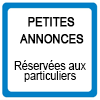
passer une petite annonce

passer une annonce de covoiturage


passer une annonce d’emploi

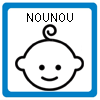
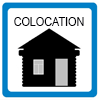
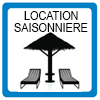

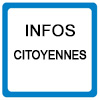
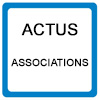
associations, postez vos actualités
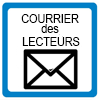
participez au courrier des lecteurs
La Guyane c’est ici
La qualité de l’Air avec
ATMO
Photothèque

Lancements 2022
Vol 259 Ariane 5



